Ocean Watch for April 16, 2020
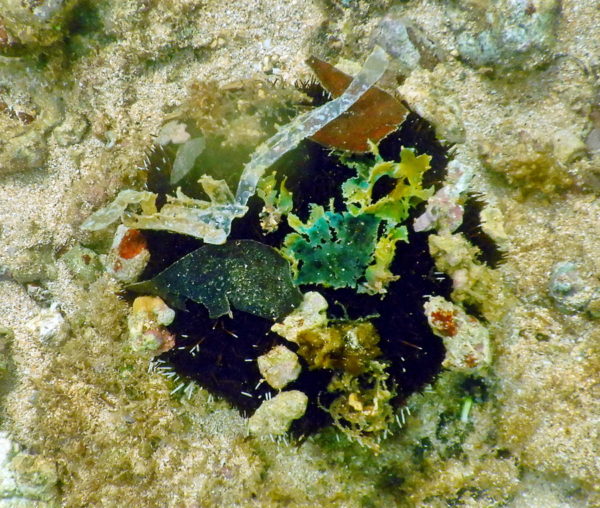
Seaweed hat. ©2020 Susan Scott
Last Sunday I went snorkeling at one of my favorite places on Oahu’s North Shore and enjoyed the best (and only) Easter parade I’ve ever seen.
For reasons unclear, on that sunny day an unusually high number of well-named collector sea urchins dotted the ocean floor, their black spiky heads covered with whatever the creatures had found lying around or drifting by.
The urchins’ Easter bonnets ranged from seaweed, to rocks, to seashells to fishing line. I once saw a collector urchin wearing a plastic fork.
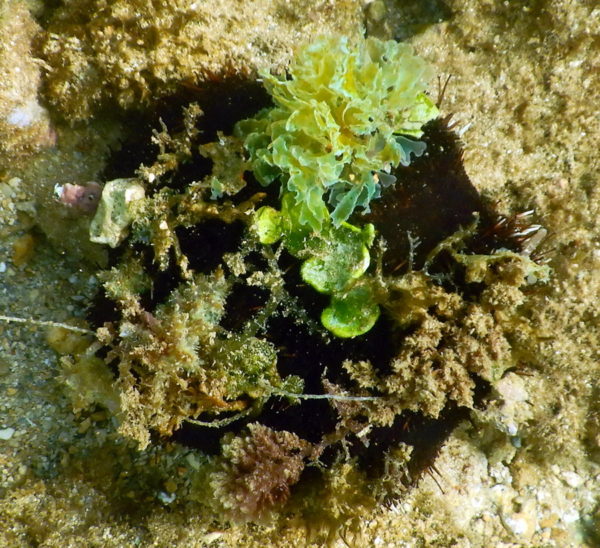
Seaweed with fishing line ©2020 Susan Scott
In 1758, scientists named this marine animal Tripneustes gratilla, gratilla being an ancient Roman cake. The Hawaiian name is hawa’e maoli. Hawa’e means “of no substance,” maybe because these urchins contain little meat. Maoli means “native.”
Unlike the sharp-spined sea urchins called wana (VAH-na) in Hawaii, collector urchins have short spines that don’t readily perforate the skin. Most collector urchins are black with some white spines mixed in. The species grows to about five inches in diameter.
Collector urchins are famous algae eaters. At night, the creatures walk around on suction-cup tube feet gobbling up seaweed with five teeth that encircle the underside mouth. On healthy reefs, the urchins keep the seaweed in check. On coral reefs suffering from alien seaweed invasions, the urchins can be saviors.
Between 2011 and 2014, workers from Hawaii’s Division of Aquatic Resources grew collector urchins in a local research center in an effort to control an invasive seaweed covering coral in Kaneohe Bay. After a trial release of 1,000 collector urchins in the bay, researchers found that the fuzzy underwater gardeners did a good job of keeping algae from smothering the coral. In 2014, the agency released another 200,000.
As to why these urchins pick up various materials with their tube feet, and hold them on their domelike bodies, researchers have theories. One is that the variety of coverings camouflages the sea urchins from fish and crab predators.
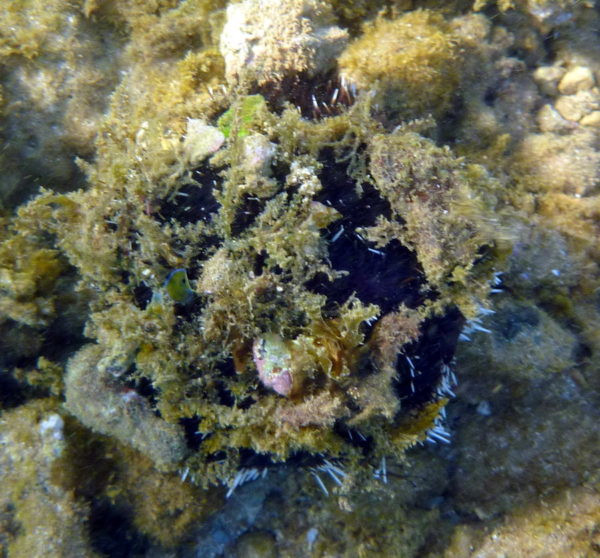
Camouflage ©2020 Susan Scott
Another notion is that added material helps the urchin anchor itself in place. This idea came from observations that a collector urchin species not found in Hawaii gathers more debris when exposed to strong wave surges.
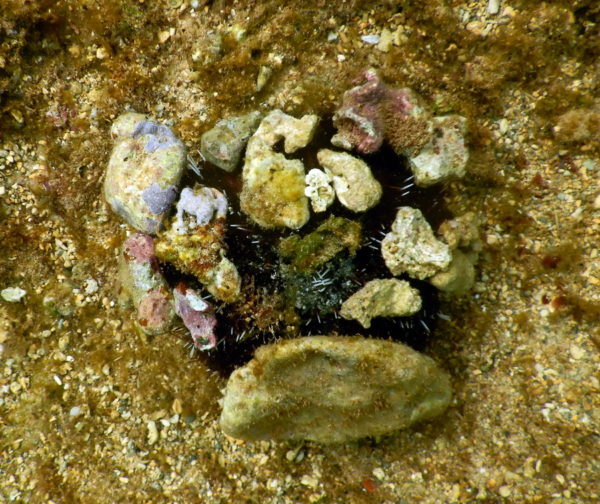
Coral rock anchor ©2020 Susan Scott
Another likelihood is that the coverings are sunhats that protect the urchins from UV radiation. In one 2016 experiment, bright light induced the urchins to pick up, and hang onto, pieces of plastic in their tanks, the urchins preferring opaque red over clear. (bit.ly/2XBjJeI)
Finding one after another of those collectors wearing silly hats cheered me for the entire day. And during this pandemic, we can all use a little cheering. Thank you, little sea urchins, for the Easter parade.
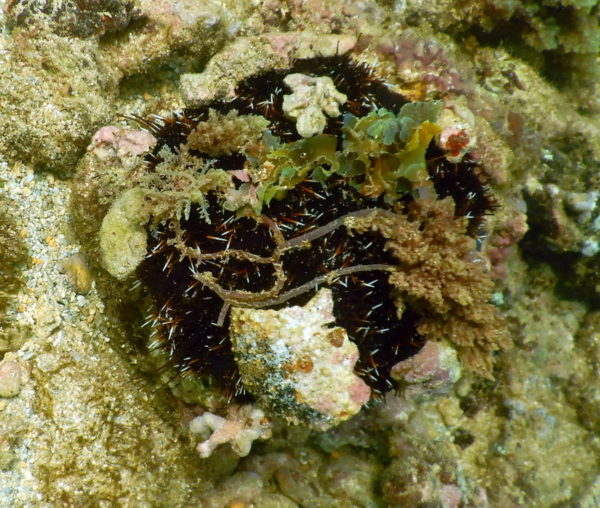
An urchin Easter bonnet,with all the frills upon it ©2020 Susan Scott